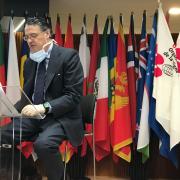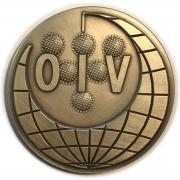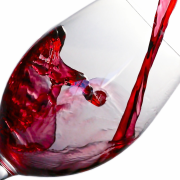
- The surface area of the world vineyard is estimated at 7.4 mha, stable since 2016
- World wine production, excluding juices and musts, in 2019 is estimated at 260 mhl, a marked decrease, compared to the historically high 2018 production
- After the slight decline in world wine consumption registered in 2018, world wine consumption in 2019 is estimated at 244 mhl, marking a +0.1% with respect to the previous year
- In 2019 the world wine export market has expanded with respect to 2018 both in volume, estimated at 105.8 mhl (+1.7%), and in value with 31.8 bn EUR (+0.9%)
- First estimates of wine production in the southern hemisphere indicate low expected volumes for 2020 for the majority of countries, with the exception of South Africa and Uruguay
OIV State of the vitivinicultural sector in 2019 report

At the time of their creation in 1930, the « Award of the International Wine Office » is concerned with rewarding 3 different categories of publications, by allocating sum of money for the purposes of encouraging research.
1°) « the study of issues concerning wine chemistry and oenology »
2°) « the best original work on a process for detecting the addition of sugar to must or wine »
3°) « the best works concerning wine ».


In an effort to keep the pace of the digitalisation process that is currently affecting all sectors of the economy, including the international public sector, the OIV intends to contract a consultant/partner to collaborate on the design and planification of a comprehensive and detailed strategy of digital transformation of the organisation.
Behind this project there is the awareness that the OIV needs a global view on IT projects to update and optimise its capacity and efficiency in terms of both internal/external communication with its stakeholders and data/information management.

In an effort to adapt to the current exceptional situation, the OIV is introducing derogatory measures concerning the geographical dispersion of jurors in international competitions.
The OIV supports the activity of the wine sector by inviting wine competitions to rely on national tasters during this transitional period. Anxious to convey a strong institutional message in these difficult times, the OIV not only allows, but urges the organisers to call on national tasters with proven experience of international competitions. This institutional response is part of an awareness of the need to reduce travel so as to limit the spread of the virus.
This temporary derogation measure runs from 6 May 2020 to 31 December 2021.

The International Organisation of Vine and Wine regrets to inform you of the cancellation / postponement of the 43rd World Congress of Vine and Wine that was to take place in 2020 in Santiago, Chile. We also received information from Uzbekistan expressing its wish to postpone the congress scheduled for 2021 in Samarkand.
The World Congress of Vine and Wine represents a key moment in the life of the OIV. Usually held every year at the invitation of one of the 47 Member States, congresses are a place for scientists of different backgrounds to meet and exchange views and knowledge. The results of work in the fields of viticulture, oenology, economics and regulatory development of the sector are presented, as well as food security and health impacts.
For 2020, Scientists around the world were invited to present their work and share their experiences in Chile about "Adaptation to new scenarios: production, social and market challenges.”
The OIV is working on a way to promote these congresses in another format to compensate for the cancellation of these meetings in the next two years. More information will be communicated in due time.
In the meantime, you can consult the book of abstracts of former congresses here.
On behalf of the Organising Team in Chile and the OIV Secretariat, we thank you for your attention and hope to see you at the next World Congress of Vine and Wine.
We remain available for any further questions on this subject at papers[at]oiv.int
Stay well, keep safe, all the best from the OIV.